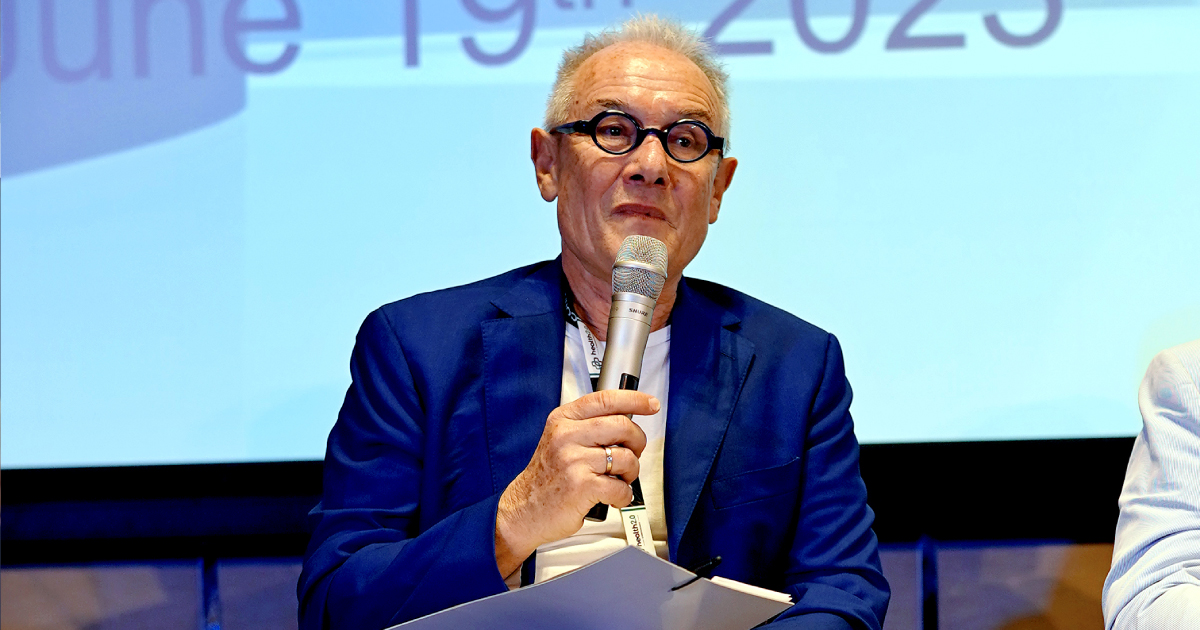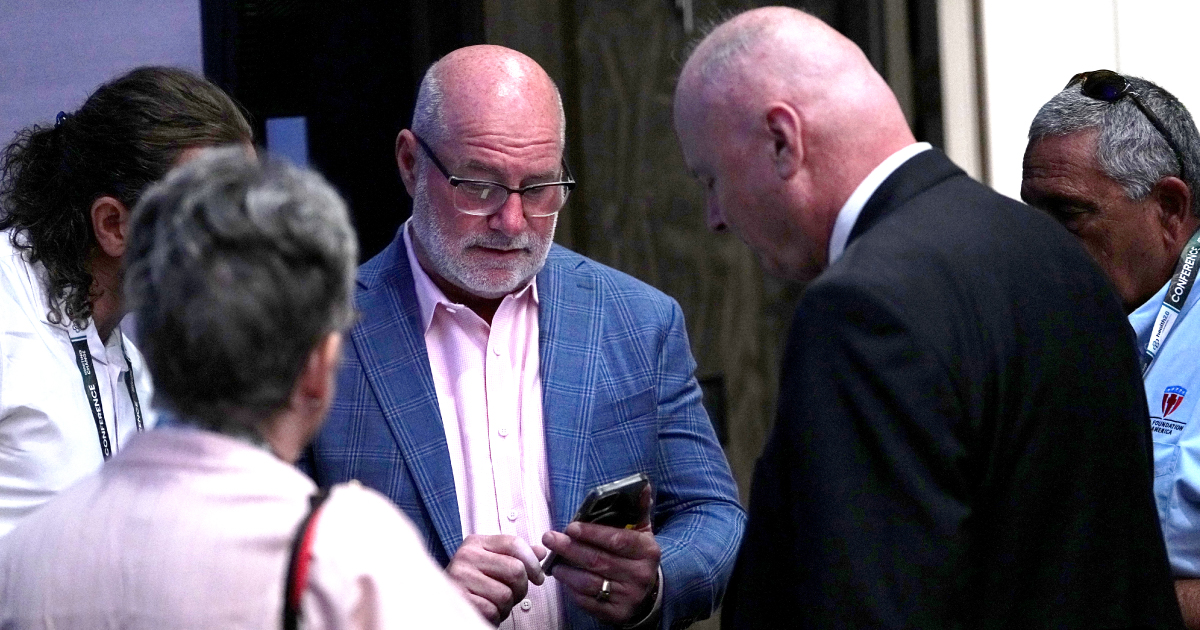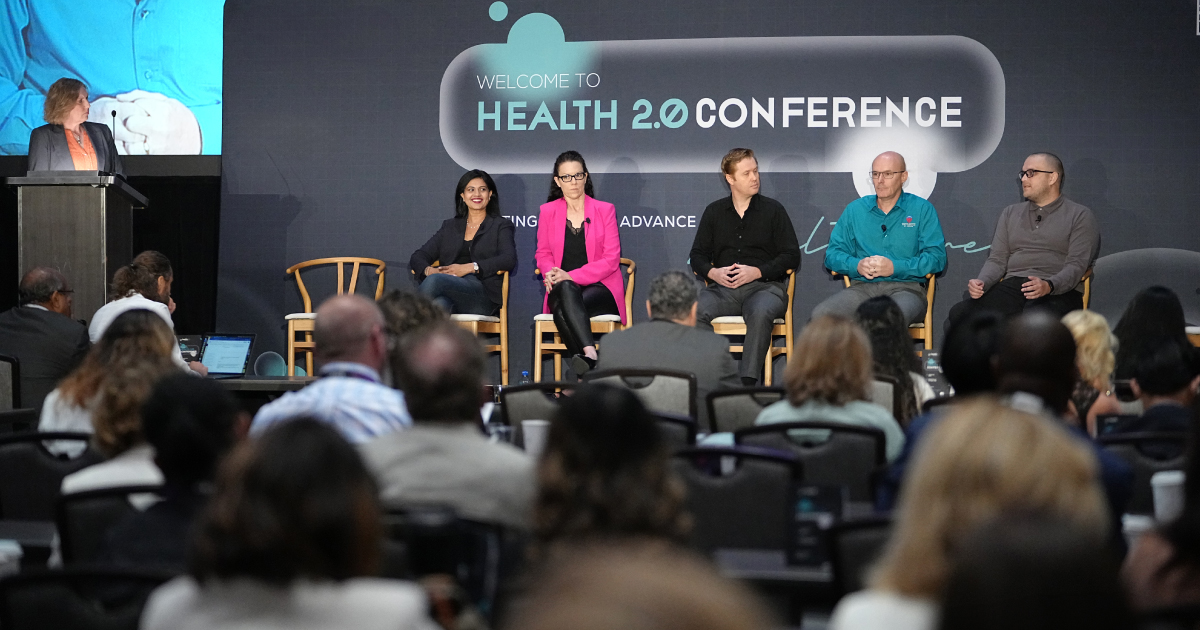Balancing innovation with accessibility has become one of the defining challenges in healthcare today. While AI has transformed diagnostics, monitoring, and patient care, many individuals still face barriers to receiving timely and affordable solutions. Wearables present an opportunity to close this gap by making real-time health data available in everyday life.
This conversation took center stage at our Health 2.0 Conference, where a distinguished panel explored how AI-powered wearables are shaping the future of healthcare delivery. The discussion reflected optimism around innovation along with the realities of affordability, adoption, and patient trust.
The session, titled “How AI-Powered Wearables Are Bridging The Accessibility Gap”, featured Dr. Sam Sammane, Founder & CEO of TheoSym; Dr. Thelma C. Ezeonu, CEO of Zybs Medical Group; Raj Kondapalli, Co-founder & CPTO of VitalFrnd; Dr. Alicia Jones, Chief Medical Information Officer at Vitus Consulting Group; and Reza Abdoli. Together, they shared practical use cases, frontline experience, and forward-looking visions that shed light on the promises and challenges of wearable technologies in care.
How Wearables Strengthen Safety Through Real-Time Monitoring
Families spread across countries can now support loved ones with more confidence. Raj Kondapalli described how AI-enabled wearables track vitals and detect falls, triggering immediate alerts that notify caregivers. When readings spike or movement suggests risk, families can intervene quickly and loop in clinicians as needed.
Veterans at ZIP Medical Group clinics benefit from continuous tracking as well. As explained by Dr. Thelma C. Ezeonu, devices capture trends over weeks and months for conditions like atrial fibrillation, creating a more accurate picture than isolated clinic readings. This stream of data helps patients and providers make timely decisions together.
AI Wearables Open New Doors For Mental Health And Prevention
Behavioral health is gaining momentum as AI wearables extend their reach beyond physical monitoring and into mental wellness. At our health and wellness conference, Dr. Alicia Jones outlined how AI-integrated headsets support guided meditation and virtual sessions for low-grade anxiety and depression. These options expand access to preventive care and, in many cases, are billable with insurers.
Predictive analytics from wearable devices adds another layer of prevention, using long-term data to help physicians anticipate risks before they escalate. Raj Kondapalli noted that long-term insights enable benchmark profiles, giving clinicians the ability to guide patients more effectively and avoid unnecessary complications. That shift toward earlier intervention can improve outcomes while reducing avoidable costs.

Source: Mobisoft
Why Data And Regulation Remain Major Hurdles For Adoption
Interoperability remains one of the most pressing hurdles, as data from multiple devices must be unified into meaningful insights. Raj Kondapalli, at our health conference, explained that differently formatted streams are complex to merge, and privacy and compliance add further complexity in regulated environments.
Provider pushback also shapes adoption. As shared by Dr. Alicia Jones, some clinicians worry that wearables could replace hands-on care. She emphasized that these tools extend reach and engagement rather than replace the provider, a point reinforced by Dr. Thelma C. Ezeonu.
Approval pathways influence speed to impact. Dr. Sam Sammane observed that promising inventions can face delays when regulatory processes move slowly, which raises costs and slows real-world use.
Making Wearables Affordable And Accessible For All Communities
The promise of AI-powered wearables means little if only a fraction of the population can use them. Dr. Alicia Jones emphasized that affordability remains one of the biggest barriers, especially for underserved communities that would benefit the most. She stressed the need for collaboration between technologists, clinicians, insurers, and policymakers to make these tools part of everyday healthcare rather than luxury add-ons.
Raj Kondapalli echoed this point by noting that coverage policies could change the game. If insurers and public programs begin treating wearables as essential health equipment, much like prescribed medications, access would expand dramatically. Reimbursement models that recognize both the preventive and cost-saving potential of wearables could ensure that patients from all backgrounds are included.
Together, their perspectives at the Health 2.0 Conference highlighted a central truth: accessibility is not just about building smarter devices, but also about creating systems that allow everyone to benefit from them.
Building Patient Trust To Encourage Wider Use Of Wearables
Convincing patients to adopt new technology is not always straightforward. Some hesitate the first time a device is offered, and overcoming that hesitation requires more than technical explanations. Dr. Alicia Jones emphasized the importance of meeting patients where they are. By framing wearables as supportive tools that provide timely feedback and empower care teams to act quickly, she explained, patients begin to see them as advocates rather than intrusions.
Trust also needs to be built inside clinics. Dr. Thelma C. Ezeonu shared how showing equivalence between newer devices and familiar methods helps reduce doubt among both patients and providers. For those living with anxiety, claustrophobia, or other barriers, reassurance and real-world demonstrations can make the difference between rejection and acceptance.
At our health and wellness conference, these perspectives highlighted that trust is not a side issue but a cornerstone. Without it, even the most advanced wearable cannot fulfill its promise of improving care.
Future Of AI Wearables And What Experts Expect Next
Wearables are on track to become everyday essentials, with individuals maintaining personal health profiles supported by advanced features. Raj Kondapalli anticipates greater accuracy in capabilities such as geofencing and fall detection as technology evolves.
Lower burden on providers and greater patient control are within reach. Dr. Alicia Jones expects AI tools to support aging in place, maternal health, and chronic care by keeping data flowing between visits.
Clinical research stands to benefit as well. Dr. Thelma C. Ezeonu at our health and wellness conference, noted that large datasets generated by wearables could reduce the need for traditional recruitment in some studies by making relevant information readily available.
The horizon may expand beyond wearables in time. Dr. Sam Sammane pointed to advances in robotics and augmentation that could shift the landscape toward companion robots that handle monitoring, potentially changing how people rely on devices.
Expert Insights On Balancing Innovation With Patient Access

The panel made it clear that the promise of AI-powered wearables will only be realized when innovation and accessibility move forward together. Affordability, trust, and supportive policies are just as important as the technology itself, and each expert stressed that patients must remain at the center of this progress.
At the Health 2.0 Conference, this discussion underscored how collaboration among innovators, clinicians, and policymakers can shape a future where care is proactive, inclusive, and equitable.
Our health conference continues to provide a platform for exploring these possibilities, reminding us that progress in healthcare comes from both cutting-edge tools and the systems that ensure they reach everyone. The insights shared in this session offered a glimpse of how tomorrow’s care can be more personal, preventive, and widely accessible.
FAQs
Q1. Can AI wearables be used for mental health beyond basic monitoring?
A. Yes. Some wearables integrate with VR or meditation apps to help reduce anxiety, track stress levels, and encourage daily wellness practices, making them tools for proactive mental health support.
Q2. What role do insurers play in expanding wearable adoption?
A. Insurance companies can recognize wearables as essential health tools. By offering reimbursement or including them in coverage, they make devices more affordable and encourage preventive care, reducing overall costs.
Q3. How do AI wearables improve post-surgical care?
A. Patients recovering from surgery can use wearables to track vitals in real time. Surgeons and care teams receive alerts if complications arise, ensuring faster intervention and safer recovery at home.
Q4. Who usually attends the Health 2.0 Conference?
A. The Health 2.0 Conference brings together healthcare professionals, researchers, policymakers, startup founders, investors, technologists, and patient advocates. The diversity of attendees creates a space where ideas from multiple perspectives can converge.
Q5. Where will the next editions of the Health 2.0 Conference take place?
A. The next Dubai edition of the Health 2.0 Conference will take place at the InterContinental DFC, from December 8–10, 2025. The USA edition will be held at the Bellagio Hotel & Casino in Las Vegas, April 7–9, 2026. Both venues offer world-class spaces for learning, innovation, and global collaboration.















